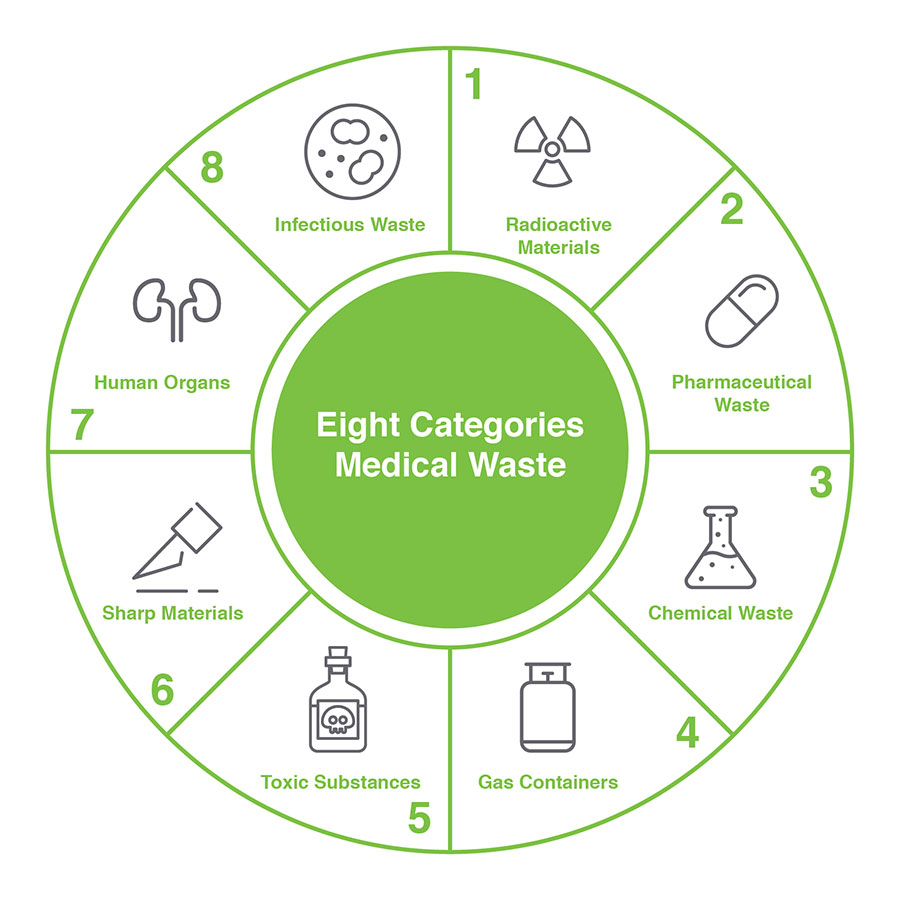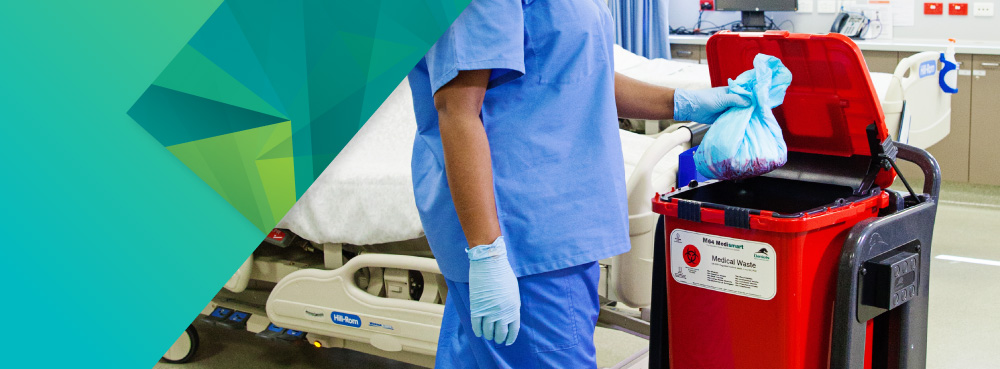Guardians of Tidiness: Resident Medical Waste Removal Service for Your Assurance
Guardians of Tidiness: Resident Medical Waste Removal Service for Your Assurance
Blog Article
Stay Ahead of Laws: Professional Suggestions on Medical Garbage Disposal
In a globe where the medical care market is frequently advancing, it is necessary for medical centers to stay ahead of laws when it comes to the correct disposal of medical waste. From understanding the various categories of clinical waste to carrying out the right collection and partition techniques, this conversation will certainly provide beneficial insights and workable suggestions to help centers stay in advance of regulations in the ever-changing landscape of clinical waste disposal.
Understanding Medical Waste Categories
Recognizing medical waste groups is vital for proper disposal and administration in medical care facilities. Clinical waste refers to any type of waste created by health care tasks that may present a hazard to public health and wellness or the setting. It is essential to classify clinical waste accurately to ensure its secure handling, disposal, therapy, and transportation.
There are numerous categories of medical waste that health care centers require to be familiar with. The most typical groups consist of contagious waste, pathological waste, sharps waste, pharmaceutical waste, and chemical waste. Each category has certain standards and laws for its proper management and disposal.
Contagious waste consists of products infected with blood or various other physical liquids, such as handwear covers, dress, and lab cultures. Pathological waste refers to human tissues, organs, or body components that need special delivery and disposal. Sharps waste consists of made use of needles, syringes, and various other sharp things that can cause injury and transmit infections. Pharmaceutical waste comprises expired, unused, or contaminated drugs that need careful handling and disposal. Lastly, chemical waste includes solvents, disinfectants, and other chemical substances used in healthcare centers.
Remaining Up-To-Date With Regulatory Adjustments
Remaining present with regulative modifications is important for health care facilities to ensure conformity and appropriate administration of medical garbage disposal. medical waste removal services. With policies constantly evolving, it is crucial for health care facilities to remain updated to avoid fines, fines, and potential injury to the atmosphere and public health
To remain ahead of governing modifications, medical care facilities should develop a system for monitoring and monitoring updates. This can be done by signing up for governing newsletters, attending seminars and workshops, and actively taking part in sector associations. In addition, facilities need to assign a team member or team in charge of staying informed and disseminating info to appropriate stakeholders.
Normal communication with governing agencies is likewise important. Health care centers ought to develop partnerships with local, state, and government firms to ensure they understand any kind of changes in guidelines that might impact their waste administration techniques. This can be done via regular meetings, involvement in public remark durations, and proactive interaction with governing firms.
Additionally, medical care facilities need to think about partnering with waste monitoring business that concentrate on medical garbage disposal (medical waste disposal services with WasteX). These companies are frequently skilled in the most recent laws and can provide assistance and support to make sure conformity
Carrying Out Correct Collection and Partition Techniques
To successfully take care of clinical garbage disposal, health care facilities need to establish appropriate collection and segregation methods based on regulatory guidelines. Implementing these methods ensures the safe handling and disposal of possibly unsafe products, secures the atmosphere, and reduces the risk of infections and injuries to healthcare employees and the public.
Appropriate collection and segregation methods involve using assigned containers and identifying systems. Health care centers need to offer clearly identified containers for various kinds of clinical waste, such as sharps, contagious waste, pharmaceutical waste, and non-hazardous waste. These containers should be color-coded and plainly significant to prevent confusion and advertise simple identification.
In addition, image source medical care facilities should educate their personnel on the correct treatments for gathering and segregating clinical waste. This includes enlightening them on the different types of waste, the ideal containers to utilize, and the importance of adhering to guidelines and regulations. Normal training sessions and correspondence course must be conducted to make certain that team member stay current on finest techniques.
Additionally, medical care facilities need to establish a system for normal collection and disposal of medical waste. This might involve partnering with accredited waste monitoring business that concentrate on medical reference garbage disposal. These firms will make certain that the collected waste is moved and thrown away in conformity with regulatory demands.
Picking the Right Disposal Techniques

Incineration is just one of the most reliable and usual methods for disposing of certain types of medical waste, such as pathological waste and sharps. It involves the controlled combustion of waste at high temperatures, reducing it to ash. However, incineration can release hazardous pollutants into the air and add to air contamination.

Chemical therapy entails the use of resource chemicals to reduce the effects of the waste and sanitize. Microwave treatment makes use of microwave energy to heat and disinfect the waste.
Making Certain Conformity Via Documents and Training
After meticulously taking into consideration the appropriate disposal methods for clinical waste, medical care centers have to make certain conformity with guidelines and lessen ecological effect by carrying out efficient paperwork and training procedures. This step is crucial in keeping a secure and lasting environment for both medical care employees and the public.

Medical care employees that take care of clinical waste needs to obtain ideal training on waste partition, taking care of, and disposal treatments. By supplying detailed training, health care centers can empower their staff to make informed decisions and decrease the threat of inappropriate waste disposal.
Final Thought
To conclude, staying ahead of regulations in clinical garbage disposal is vital for health care facilities. medical waste removal services. Comprehending the different groups of clinical waste, staying updated with governing modifications, executing proper collection and partition techniques, choosing the appropriate disposal approaches, and making sure compliance via paperwork and training are all vital steps. By adhering to these guidelines, medical care companies can efficiently dispose and handle of medical waste in a liable and risk-free manner
From recognizing the different groups of medical waste to applying the ideal collection and segregation techniques, this discussion will certainly provide useful insights and workable tips to assist centers stay in advance of regulations in the ever-changing landscape of medical waste disposal. - medical waste disposal services with WasteX
The most common classifications consist of contagious waste, pathological waste, sharps waste, pharmaceutical waste, and chemical waste. Medical care facilities should offer clearly identified containers for various kinds of clinical waste, such as sharps, contagious waste, pharmaceutical waste, and non-hazardous waste. Medical care centers need to develop a comprehensive system to record and track all aspects of medical waste disposal, including kinds of waste created, amounts, and disposal approaches used. Healthcare workers who deal with clinical waste needs to obtain ideal training on waste partition, taking care of, and disposal treatments.
Report this page